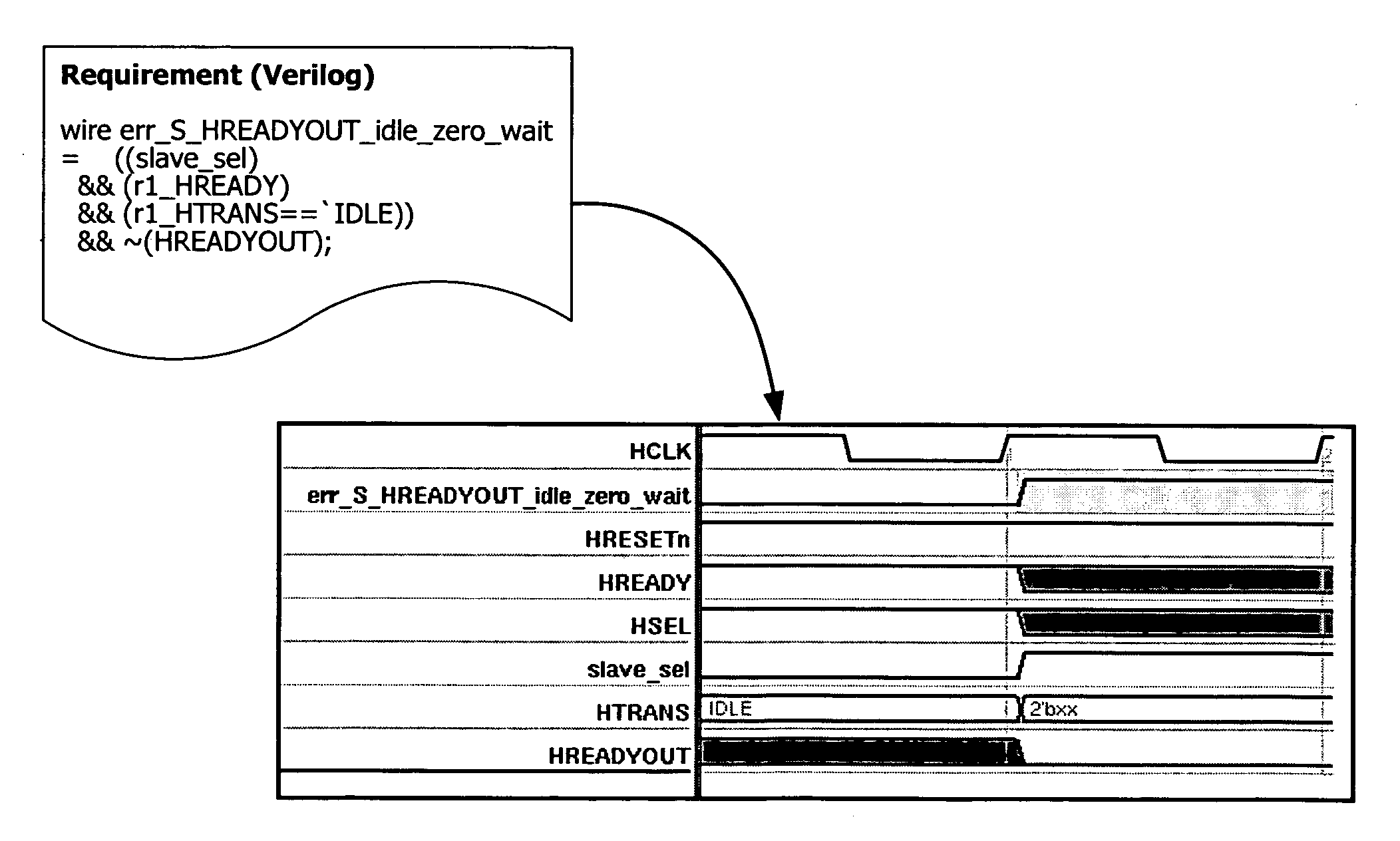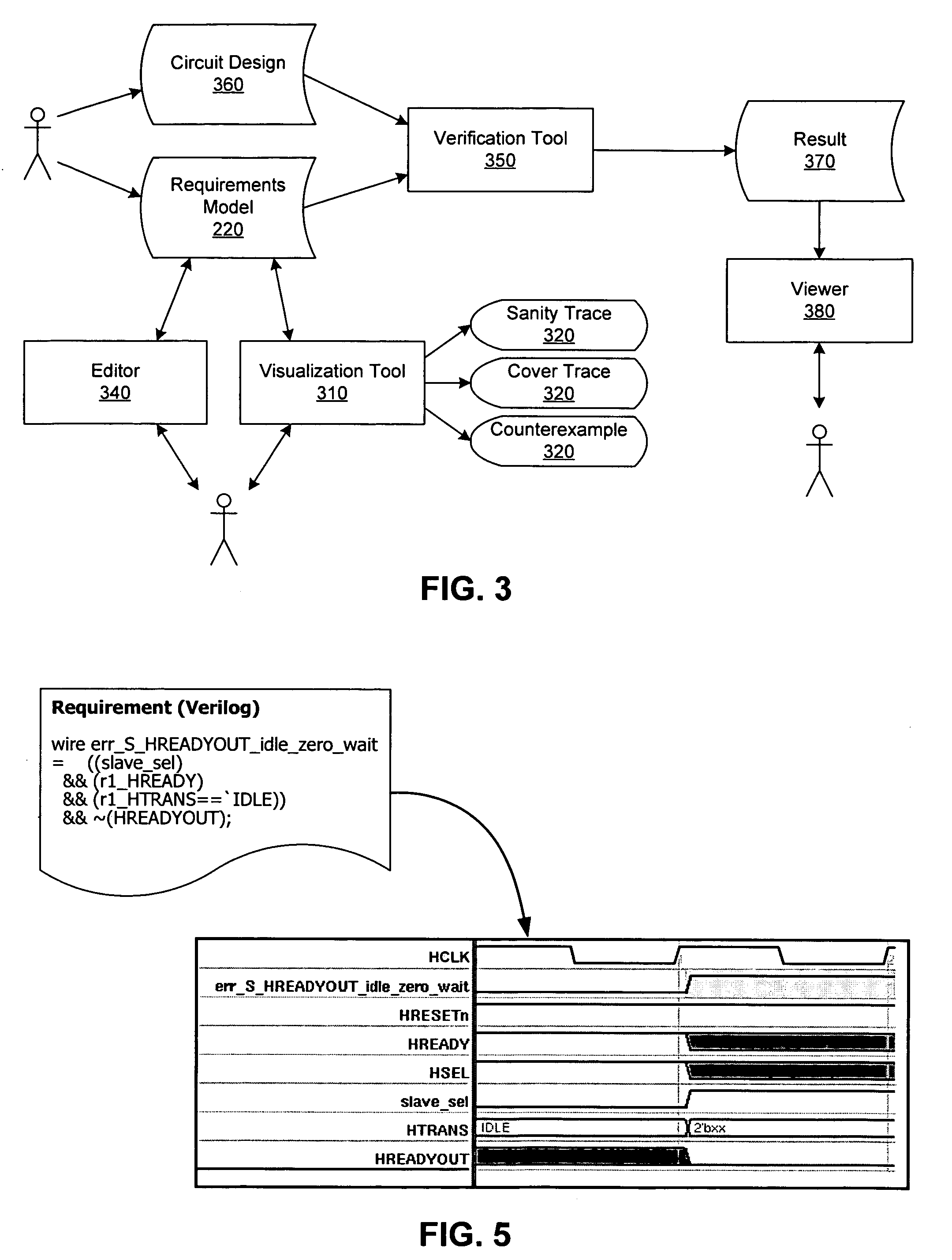Meaningful visualization of properties independent of a circuit design
- Summary
- Abstract
- Description
- Claims
- Application Information
AI Technical Summary
Benefits of technology
Problems solved by technology
Method used
Image
Examples
Embodiment Construction
[0037]Types of properties that may be visualized with embodiments of the invention include Boolean properties, temporal properties, and high-level properties. Boolean properties are typically captured natively as a Boolean expression in an HDL language or a verification language. A temporal property may include a collection (one or multiple) of logical and temporal relationships between and among subordinate Boolean expressions, sequential expressions, and other properties that in aggregate represent a set of behaviors. Temporal sequences of events are typically specified in a verification language such as SVA and PSL. A high-level property may include a collection (one or multiple) of Boolean and temporal properties together with auxiliary logic that is not needed for the design but is needed for verification. High-level properties are typically encoded in a requirements model, which defines some finite state machines and a number of temporal properties represented either by actual...
PUM
 Login to View More
Login to View More Abstract
Description
Claims
Application Information
 Login to View More
Login to View More - R&D
- Intellectual Property
- Life Sciences
- Materials
- Tech Scout
- Unparalleled Data Quality
- Higher Quality Content
- 60% Fewer Hallucinations
Browse by: Latest US Patents, China's latest patents, Technical Efficacy Thesaurus, Application Domain, Technology Topic, Popular Technical Reports.
© 2025 PatSnap. All rights reserved.Legal|Privacy policy|Modern Slavery Act Transparency Statement|Sitemap|About US| Contact US: help@patsnap.com



